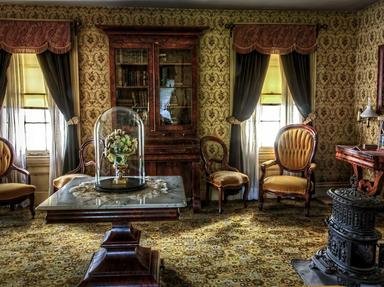Quiz Answer Key and Fun Facts
1. The first square that Getha visits is the Tiananmen Square in Beijing, the capital of China. In 1989 the square was the scene of a protest that ended in a massacre. Chinese soldiers killed several protesters on or near the square. The symbol of these protests was a man that staged a form of silent protest during the events. What is the name this man is known by?
2. At the start of 2011 there were protests in Egypt against the reigning president, asking for reforms to the political system. The protests were mostly at the Tahrir square in the city of Cairo. Getha visits this square as second on her trip. Who is the president that was eventually forced to resign as a result of the protests?
3. The third square that Getha visits, is the Red Square, located in the Russian capital of Moscow. In 1987 a German pilot managed to land his plane near this square on a bridge close to the St. Basil's Cathedral. What was the name of the German aviator, that pulled off this daring stunt?
4. The fourth square on Getha's itinerary is the Plaza de Mayo in Buenos Aires, the capital of Argentina. This square has long been the meeting place of the Mothers of the Plaza de Mayo, a group of Argentinian mothers who are fighting for justice to be done to their children, who were abducted during the so-called "Dirty War" between the years of 1976 and 1983. Which article of clothing symbolizes this organisation and is also painted on the ground on the square?
5. The fifth location to be visited by Getha is the Azadi Square in Tehran, the capital of Iran. The square was the scene of many protests leading up to the Iranian Revolution in 1979. In 2009 the square formed the location of protests following the 2009 election victory by the reigning Iranian president. Which president won the controversial elections in 2009?
6. Number six on the list of squares to visit for Getha is the famous Times Square in New York. In May 2010 a terrorist attack was planned by detonating a car bomb. The bomb failed to go off and fortunately could be disarmed. The car that was used was reported to be a SUV, but which type of SUV supposedly popular with boy scouts was it?
7. The next stop for Getha is the Revolution Square in Bucharest, the capital of Romania. This square is closely associated with the rise and fall of Romanian politician Nicolae Ceausescu. In 1968 a mass meeting was staged here at the height of his career, in 1989 another mass meeting led to his regime being overthrown. What became of Nicolae and his wife Elena?
8. The eighth square on Getha's trip is the Plaza de la Revolucion in Havana, the capital of Cuba. The square was used for many political rallies and was the scene of the speeches of a former president, at least twice a year. Which president was famous for his long speeches and was in office between 1976 and 2008?
9. The ninth square to visit for Getha is the Zocalo, the main square in Mexico City. As one of the central places in the city, it is often used as a gathering place for Mexicans. A lot of protests are held here too, because it is the center of government. In 1968 the Zocalo was the starting point of an important event. What major sports event was this a part of?
10. The last square on Getha's list is the Wenceslas Square in Prague. In 1989 the square was the scene of a series of demonstrations leading to the communist government being overthrown. What is the name given to the non-violent revolution that took place in the former country of Czechoslovakia?
Source: Author
James25
This quiz was reviewed by FunTrivia editor
bloomsby before going online.
Any errors found in FunTrivia content are routinely corrected through our feedback system.

